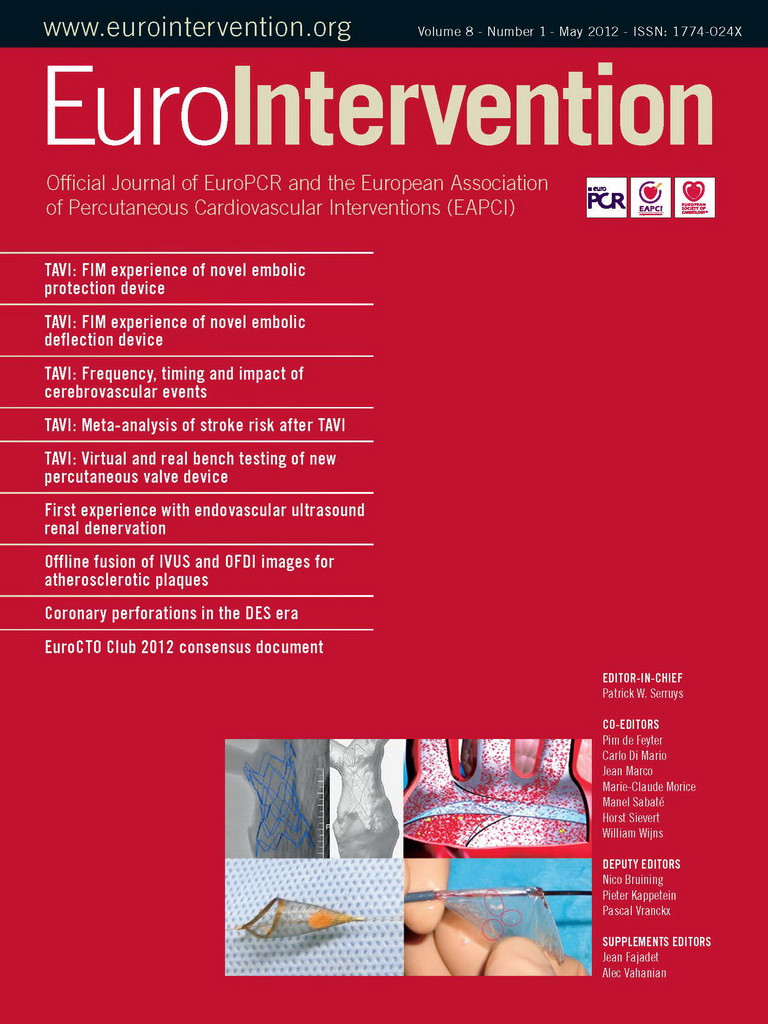The American College of Cardiology Foundation (ACCF) and the American Heart Association (AHA) have recently released their new Guidelines for Coronary Artery Bypass Graft (CABG) surgery1 and for Percutaneous Coronary Intervention (PCI)2.
Following the example set by the 2010 European Society of Cardiology (ESC)/European Association for Cardio-Thoracic Surgery (EACTS) Guidelines on Myocardial Revascularisation (MR)3, the 2011 ACCF/AHA CABG Guidelines were a joint collaborative effort between surgeons, cardiologists and physicians from other specialties.
However, as opposed to the ESC/EACTS MR Guidelines that provided, for the first time, a joint comprehensive document on the management of myocardial revascularisation, the ACCF and AHA have chosen to produce two separate documents conveying an atmosphere of division or territorial thinking between physicians where a common multidisciplinary approach is definitely to be recommended.
The concept of a Heart Team for decision-making, introduced by the 2010 ESC/EACTS MR Guidelines, was also recommended in the ACCF-AHA CABG Guidelines, but only for patients with unprotected left main and complex coronary artery disease (CAD). The Heart Team strategy was probably one of the most important features and the major strength of the ESC/EACTS MR Guidelines. Another important feature of the ESC/EACTS MR Guidelines that was not mentioned in the ACCF/AHA Guidelines was patient information and informed consent.
The 2011 ACCF/AHA Guidelines for CABG are very procedure-oriented and contain useful technical recommendations for the practice of coronary surgery including perioperative management and a section on CABG-related morbidity issues. For example, they address issues such as the appropriate choice of bypass graft conduit, the use of off-pump CABG and pre- and post-operative antiplatelet therapy. In this respect, while the use of a second internal thoracic artery graft is encouraged, particular emphasis is made on not using the radial artery for lesions <90% (critical stenosis).
The CAD revascularisation section, addressing which patient should be revascularised and whether it should be accomplished with CABG or PCI, is written by a common writing committee and is therefore identical in the CABG and PCI Guidelines. Compared with previous versions of ACCF-AHA CABG Guidelines, this certainly represents a step forward. This shared section states that PCI is a reasonable alternative to CABG in stable patients with left main CAD who have a low risk of PCI complications and an increased risk of adverse surgical outcomes. Similar to the ESC/EACTS MR Guidelines, the ACCF/AHA CABG Guidelines separate indications for myocardial revascularisation for prognosis (survival improvement) and for symptoms. Overall, recommendations are largely similar, with differences in the level of evidence and the presentation format. However, whereas the ESC/EACTS MR guidelines consider the indications for prognosis for both methods of revascularisation in aggregate, the ACCF/AHA Guidelines discuss the respective value of CABG and PCI for prognosis for each anatomical subset and, for example, give PCI a IIa recommendation (uncertain benefit) for one-vessel proximal left anterior descending CAD and two-vessel CAD. However, there are insufficient and contradictory data in the literature to specifically address the prognostic benefit of PCI versus optimal medical therapy according to anatomical subsets.
In line with the ESC/EACTS MR Guidelines, the 2011 ACCF/AHA CABG Guidelines also recommend the use of the SYNTAX score for decisions regarding treatment of patients with multivessel disease.
Guidelines are recommendations written by scientific societies gathering the best available evidence published in the medical literature, but contrary to the law, they do not legally bind physicians. They are clinical orientations that help physicians in the diagnosis and treatment of medical conditions. Despite extensive evidence showing that adherence to Guidelines improves patients’ outcomes, and despite their widespread diffusion, under the auspices of ESC, EACTS, ACCF, AHA, North American Thoracic Surgical Societies, and numerous National Societies, there is a strong gap between what clinical Guidelines recommend and real world practice.
The reasons for this gap in clinical Guidelines implementation are multifactorial, but one recurrent theme is that Guidelines “lag behind clinical developments”. Indeed, continuous technological developments lead to the delusional perception that the latest innovation has changed the paradigm. Despite the presence in the writing taskforce of world-renowned interventional cardiologists and a balanced composition, some have considered the ESC/EACTS MR Guidelines of being favourable towards surgical revascularisation and already outdated when they were released. However, some 18 months after their publication, recent evidence, such as the three- and four-year Syntax trial results and the ASCERT study results, have confirmed their on-going validity4-6. Currently, there is very limited data regarding the implementation of Guidelines for myocardial revascularisation, but in a 19-hospital catheterisation laboratory database in New York State, patients with stable CAD received significantly more recommendations for PCI and fewer recommendations for CABG than indicated in the previous ACCF/AHA Guidelines7. This reflects, at least in some settings, a practice of medicine that is based on biases and personal experience rather than evidence and multidisciplinary discussion.
Eagerly awaited are the results of the ESC Survey on stable coronary artery disease, which, hopefully, will provide information on clinical practice in Europe regarding myocardial revascularisation as well as assessing the degree of Guidelines’ implementation. Until then, we must strive to achieve multidisciplinary decision-making for patients with complex CAD, and have the humility to admit that technical feasibility of any procedure is not the only justification for its performance. Instead, the indication for any medical act depends on the holistic appraisal of its impact on the best anticipated outcome for each individual patient.
Conflict of interest statement
The authors have no conflict of interest to declare.




